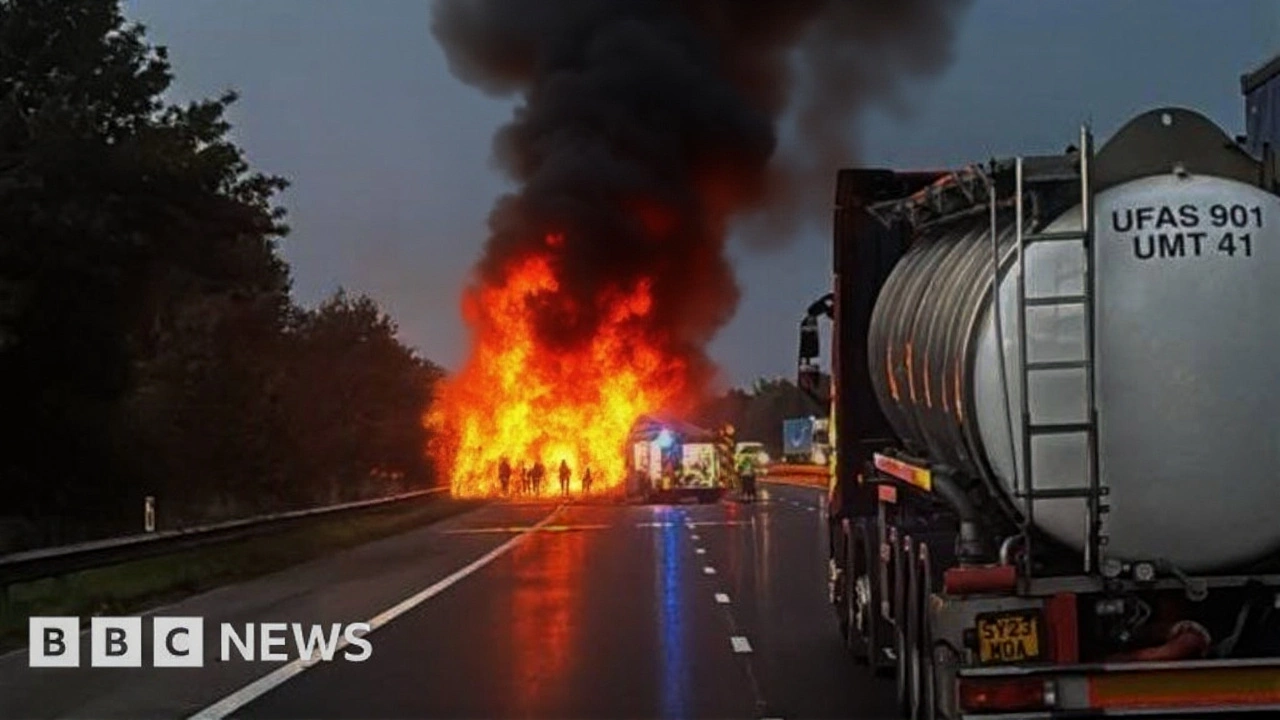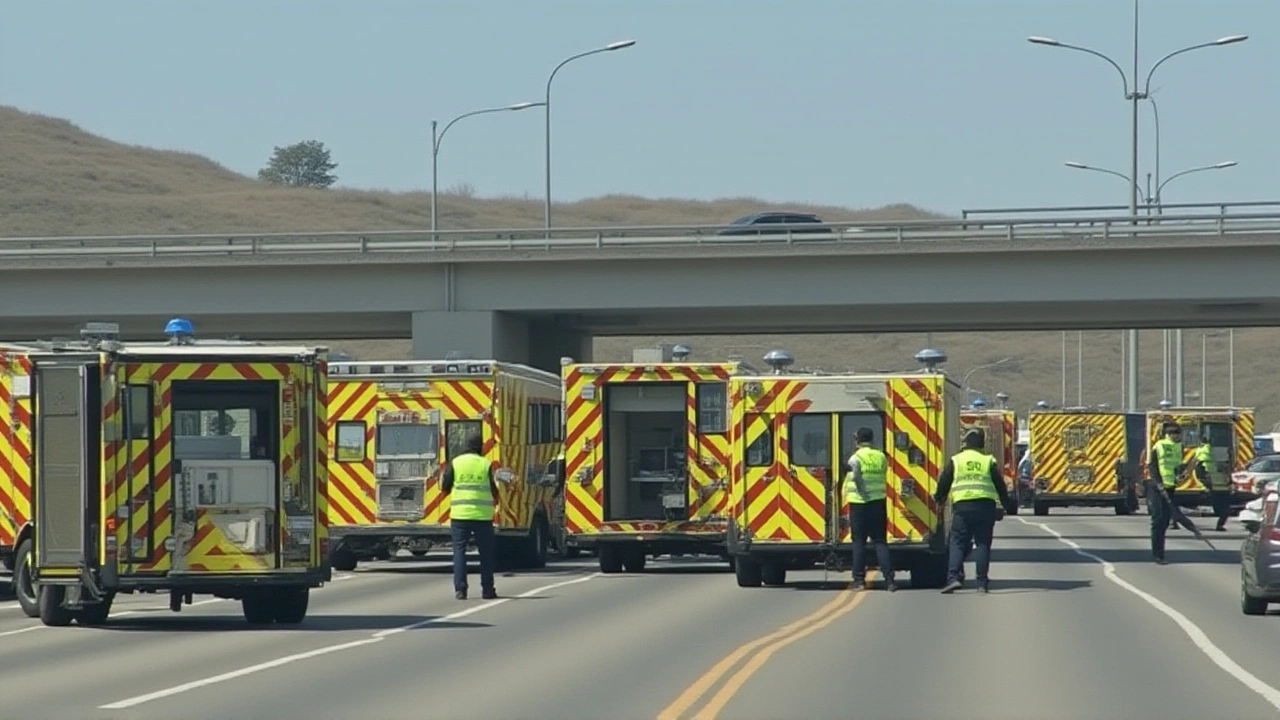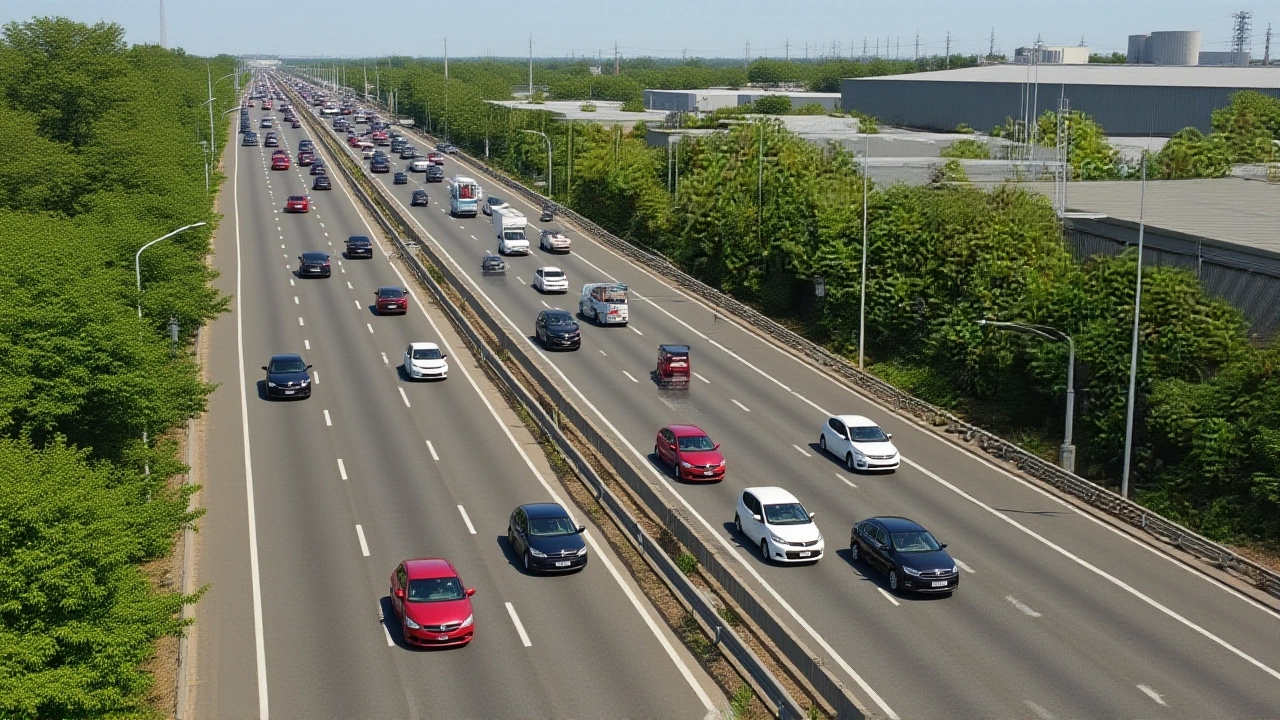M5 shut after transporter fire engulfs nine electric cars in Devon
 Oct, 6 2025
Oct, 6 2025
When National Highways confirmed a full closure of the M5 motorway on the morning of 1 October 2025, drivers on the South West corridor were forced into an unexpected stand‑still. The shutdown stemmed from a blaze that erupted at roughly 6:30 a.m. on a double‑decker car transporter hauling nine electric vehicles between Junction 28 at Cullompton and Junction 29 near Exeter. Devon & Cornwall Police urged motorists to avoid the area entirely as flames leapt from the carrier’s deck and black smoke rolled across the Devon countryside.
What happened on the M5?
The 18‑metre transporter, which had departed a logistics hub near Totnes earlier that day, was caught mid‑journey when the lithium‑ion packs in one of the nine James Whitaker‑owned cars overheated. The resulting thermal runaway triggered a fire that quickly engulfed the entire trailer. An eyewitness standing by the roadside told reporters, “the whole car transporter is ablaze—you could see the orange glow for miles.”
Within minutes, Devon & Somerset Fire and Rescue Service dispatched four pump‑ladder appliances, a specialist hazardous‑materials unit, and a mobile battery‑fire suppression team. Firefighters noted that standard water streams were less effective; instead, they relied on foam and controlled cooling to prevent the batteries from reigniting after the initial suppression.
Why electric‑vehicle fires are different
Unlike conventional gasoline‑powered cars, electric models store energy in large, tightly packed battery cells. When a cell fails, it releases heat at a rate that can exceed 1,000 °C, a phenomenon known as thermal runaway. The fire on the M5 highlighted two key challenges:
- Rapid heat spread: The tightly arranged packs meant the fire jumped from one vehicle to the next within seconds.
- Hidden re‑ignition risks: Even after the flames were doused, the interior of the battery modules continued to emit heat, forcing crews to monitor the scene for over three hours.
Professor James Whitaker, a battery‑safety expert at the University of Exeter, explained, “When lithium‑ion cells breach, they can release flammable electrolyte vapour. In a confined space like a transport trailer, the vapour can build up and explode, which is why we see the thick black plume after a few minutes.”

Emergency response and the road impact
By 8:00 a.m., the fire was under control, but the trailer remained a hazardous obstacle. National Highways kept both north‑bound and south‑bound lanes closed, diverting traffic onto the A30 and A38. Their own monitoring system logged an average delay of 32 minutes for motorists on the alternate routes, with peak queues stretching more than ten kilometres near Cullompton.
Local businesses felt the ripple effect quickly. A freight company based in Exeter reported that three delivery trucks missed a crucial 10 a.m. loading window, costing the firm an estimated £4,200 in penalty fees. Meanwhile, commuters expressed frustration on social media, with one driver writing, “Stuck for an hour behind a fire‑truck convoy—this is the worst start to a Monday.”
By midday, crews had removed the burnt trailer, but sections of the M5 remained cordoned off for safety inspections of the road surface, which had been scorched by the intense heat. National Highways projected that full reopening would not occur until the early evening, around 6:00 p.m., pending structural assessment.
Expert analysis and policy implications
The incident reignited a debate that began after a similar EV fire on the A14 in 2023, when a lorry carrying ten battery‑powered vans ignited near Cambridge. Transport safety analysts argue that existing regulations—primarily designed for internal‑combustion vehicles—do not adequately address the unique hazards of high‑capacity lithium packs.
In a briefing to the Department for Transport, the Royal Society for the Prevention of Accidents (RoSPA) recommended three immediate steps:
- Mandatory thermal‑monitoring devices on all multi‑vehicle EV transports.
- Specialist training for fire crews on battery‑fire suppression techniques.
- Revised segregation distances between EVs and flammable cargo on public highways.
Minister for Transport Sarah Jennings responded, saying, “We are reviewing current guidance and will work with industry partners to ensure that incidents like today are less likely to happen.” The statement hints at a possible update to the “Transport of Dangerous Goods” regulations, which may soon include specific clauses for lithium‑ion batteries.

What’s next for the M5 corridor?
Beyond the immediate repairs, the longer‑term outlook for the M5 involves a push toward smarter traffic‑management systems. National Highways is piloting a real‑time incident‑alert platform that integrates CCTV feeds with AI‑driven hazard detection. If successful, the system could flag abnormal heat signatures on freight vehicles before a fire spreads, providing earlier warnings to drivers and police.
Meanwhile, logistics firms are re‑evaluating their fleet strategies. Several carriers announced plans to retrofit existing transporters with fire‑resistant bulkheads and onboard fire‑extinguishing units specifically rated for lithium‑ion fires. As EV adoption accelerates—projected to reach 30 % of new car registrations by 2030—the need for such safeguards will only grow.
For now, travelers heading south from the Midlands are advised to check live traffic updates before embarking on the M5, and to expect lingering delays until the evening. The Devon countryside may have woken up to an orange sunrise, but the incident serves as a stark reminder that the green revolution on the roads comes with new safety challenges.
Frequently Asked Questions
Why did the electric‑vehicle fire spread so quickly?
Lithium‑ion batteries release a large amount of heat when a cell fails, creating thermal runaway. In a tightly packed trailer, that heat can jump to adjacent packs within seconds, causing a chain reaction that fuels a fast‑moving blaze.
What steps are being taken to prevent similar incidents?
The Department for Transport is reviewing regulations to include mandatory thermal‑monitoring on EV transports, enhanced firefighter training, and greater separation distances between electric and flammable cargo on highways.
How long was the M5 expected to stay closed?
Officials said the closure would last several hours. The road reopened around 6 p.m. after safety inspections and removal of the burnt trailer were completed.
Did the fire affect nearby residents?
Air quality monitors recorded a temporary rise in particulate matter, but no injuries were reported. Local authorities issued a precautionary advisory for residents to keep windows closed until the plume cleared.
What does this mean for the future of EV transport?
As electric vehicles become more common, logistics firms will need to invest in fire‑resistant equipment and adopt new monitoring technologies. The incident is likely to accelerate industry standards for safer EV freight handling.